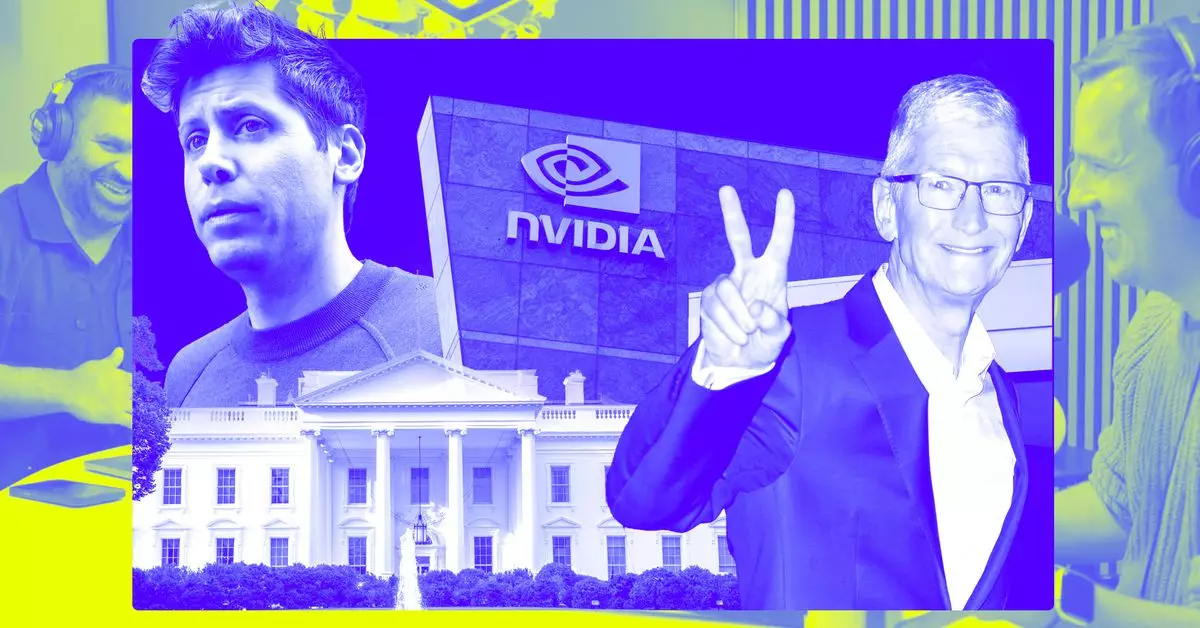In an era characterized by rapid technological advancements, understanding future trends and speculating on upcoming developments has become an engaging and essential exercise for industry insiders and consumers alike. This is especially true in the domain of tech giants and disruptive startups. Drawing from the recent discussions on The Vergecast, which included a nuanced look into potential scenarios for 2026, we now delve into the implications of these predictions and what they mean for the consumer tech landscape.
One of the clear predictions made by tech analysts is the enduring presence of current CEOs at the helm of major tech companies. It was asserted that by 2026, Tim Cook of Apple and other Big Tech leaders would still maintain their positions. This stability among leadership indicates a broader trend of continuity amidst turbulent market conditions, suggesting that established companies are prioritizing experience and stability over drastic leadership changes. It raises questions about the impact of such stability on innovation. Are these leaders simply riding the wave of past successes, or can they continue to inspire groundbreaking advancements?
Nvidia’s Ascendancy and Market Value
Predictions indicated that Nvidia may become the most valuable company globally. With the surge in artificial intelligence applications and GPU demand, Nvidia’s position reflects a growing focus on graphic computing power as a critical asset for various industries, not just gaming. This speculation points to a paradigm shift in the market where the value is increasingly placed on companies that can leverage AI technologies effectively. However, it is crucial to consider the sustainability of this growth and whether it is a bubble waiting to burst or a genuine shift in value creation.
The Fate of Snap and Social Media Turbulence
The potential acquisition of Snap remains contentious, with most panelists predicting it wouldn’t happen by the end of the year. This strife highlights a broader struggle within social media platforms to maintain user engagement and profitability. The fragmenting social media landscape, juxtaposed with new players such as Bluesky gaining traction, poses significant challenges for established entities like Snap. The issue raises the question of whether the social media giants will evolve or create tools that could redefine user interaction and content-sharing dynamics.
Regulatory Scrutiny and the Future of AI
The discussion surrounding the potential for a significant AI scandal and regulatory action against large tech companies emphasizes ongoing governmental tensions with the tech industry. As society grapples with the ethical implications of AI, strong interventions may be necessary to navigate this complex landscape. The conversation indicates that as technology evolves, so too must our frameworks for regulation and ethical accountability. Stakeholders must consider how these changes will affect innovation, consumer trust, and competitive dynamics.
The Streaming Wars: What Lies Ahead?
Consensus seems to suggest that traditional media platforms, such as Paramount and Peacock, may not survive in their current form amid fierce competition from giants like Netflix. The success or failure of these platforms provides an insightful glimpse into shifting consumer preferences towards on-demand content. Additionally, the struggles of Netflix to find its footing in the live market underline a crucial turning point for streaming services: the necessity for evolution to meet consumer expectations in an ever-evolving landscape.
Amid all this speculation lies a noteworthy focus on consumer adoption of innovative technologies. Predictions surrounding the mainstream acceptance of folding phones suggest that these devices may not surpass conventional smartphones just yet. Yet, the trajectory of technology indicates continued experimentation with form factors, pointing to an intriguing future where adaptability may finally meet consumer demand. The real question remains: how will brands engage and educate consumers when new technologies become available?
As we look toward the future of technology and consumer engagement, the insights gleaned from these predictions reveal the intricate web of opportunities and challenges on the horizon. The stability of leadership, the emergence of new technologies, the evolution of regulatory scrutiny, and the dynamic nature of consumer preferences are pivotal themes that will shape the landscape in years to come. Proactive engagement with these developments will be crucial for both established companies and emerging players as they strive to create value in an increasingly competitive environment. Ultimately, the year 2026 is likely to be pivotal as it could either validate these predictions or force us to rethink our understanding of the tech world.


Leave a Reply